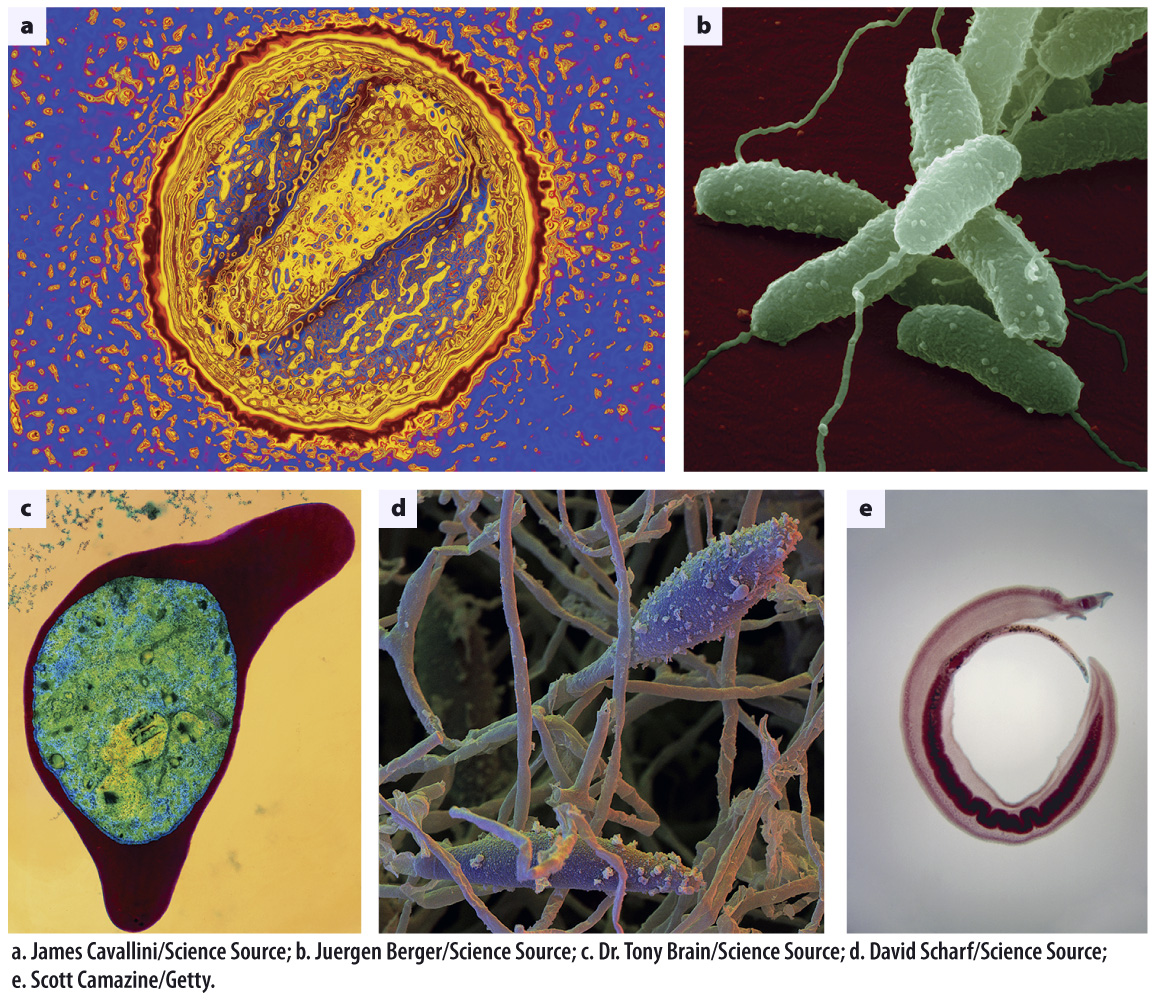Pathogens cause disease.
Pathogens are organisms and other agents that cause disease. For a bacterium, pathogens include viruses that infect bacteria, as we have seen (Chapter 19). These viruses, called bacteriophages (literally “bacteria eaters”), can cause the bacterial cell to lyse, or burst, as viral progeny are produced inside the bacterium. In response, bacteria protect themselves with general mechanisms such as the cell wall or specific mechanisms such as CRISPR, which allows bacteria to “remember” past viral infections and mount a response on subsequent infections (Chapter 12).
For a fungus, pathogens include bacteria and viruses. In turn, fungi have evolved molecules that kill or inhibit the growth of bacteria. We have isolated many of these substances and learned how to use them as antibiotics. Penicillin is a famous example. It was discovered in 1928 by Alexander Fleming when he noticed that a fungus in the genus Penicillium interfered with the growth of bacteria in a petri dish.
For mammals and other vertebrates, the focus of this chapter, pathogens include viruses, bacteria, fungi, single-celled eukaryotes commonly called protists, and worms (Fig. 43.1). They cause disease in diverse ways. In some cases, they infect a particular type of cell. For example, HIV destroys a specific type of cell involved in the immune system itself, making the body susceptible to other pathogens that the body would usually be able to easily defend itself against. In other cases, pathogens proliferate in an organ and interfere with its function. Pneumonia, for example, can result when bacteria or fungi proliferate in lung tissue and limit gas exchange. Sometimes, pathogens produce toxins that cause disease. Cholera, for instance, results from infection with a toxin-producing bacterium called Vibrio cholera. The toxin interferes with membrane transporters in the small intestine and causes diarrhea, resulting in dehydration and sometimes death.

FIG. 43.1 Human pathogens. (a) Human immunodeficiency virus (HIV); (b) cholera bacteria; (c) a malaria parasite (green) inside a swollen red blood cell; (d) ringworm (a fungus); (e) schistosome (a worm).
Source; b. Juergen Berger/Science Source; c. Dr. Tony Brain/Science Source; d. David Scharf /Science Source; e. Scott Camazine/Getty.
